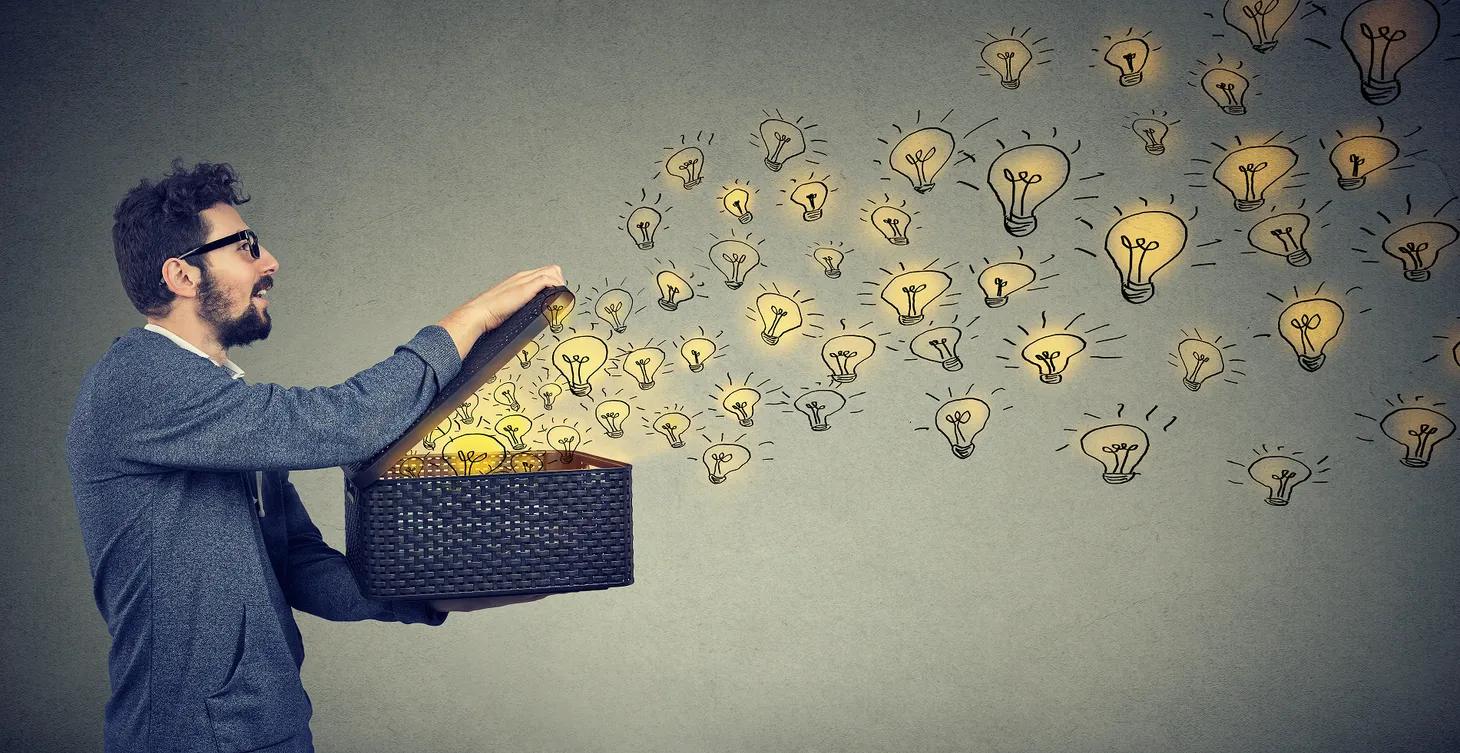Innovation in Education: What’s Old and What’s New
The world our kids will need to compete in is radically different from the world ten years ago. The old adage about education that “what was good enough for you when you were a kid is good enough for today” gives comfort and justification that everything is fine. Everything is not fine. Our schools

The world our kids will need to compete in is radically different from the world ten years ago. The old adage about education that “what was good enough for you when you were a kid is good enough for today” gives comfort and justification that everything is fine. Everything is not fine. Our schools are training students in memorization of information and test-taking as opposed to finding and exercising their creativity and innovation skills to compete in the coming innovation economy. We need innovation in education.
If we are not preparing our children for the future, then we are preparing them for failure.
In this article, I will present the need for change, the challenges to changing the education system, what are some steps to encourage teachers, schools, and administrators to change, — and what parents can do today to help their children prepare for the coming innovation economy.
The Need For Innovation in Education
Education needs to change. This is not a new argument. This has been a topic for years. I wrote about it in my first book, Beyond The Obvious, back in 2012 and nothing has changed. The education system is doing the same thing the same way they have for decades, if not for centuries.
The 21st-century workforce has different requirements than previous centuries did. We no longer can rely on memorization skills as the basis for career success.
The challenges we face as a society require us to innovate solutions to problems we are facing here and now — and to be prepared to innovate solutions to problems that don’t even exist using technologies that haven't yet been invented. How do you memorize and test for something that doesn’t yet exist?
The skills we need for the innovation economy emphasize collaboration, creative thinking, and problem-solving.
What Is This New Innovation Economy?
The innovation economy describes a shift from a traditional manufacturing-based or extractive economy to one reliant on creativity and innovation. The definition used by Mihaly Csikszentmihalyi and others is “the production of novelty through creativity.” It has been referred to as an ‘economy of ideas' or a new cultural economy where businesses and organizations innovate to create new products, services, or processes. We often contrast it with the knowledge economy, which is focused on the use of knowledge and information.
Why Is It So Hard To Change Education?
It's difficult to innovate in an educational system that rewards compliance to the rules, competition among student peers, and a student's ability to memorize.
As long as students can get A’s by regurgitating facts onto essays, teachers will continue this practice. It requires little thought or creativity by the teacher or student. Educators prefer to maintain the status quo rather than innovate because it is what they know.
Sounds like every other business facing the need to innovate.
Schools need to innovate or risk becoming extinct. Schools must provide opportunities for students to innovate, create and become industry-ready with the necessary 21st-century skills required by employers.
What Steps Can Educators Take To Change?
The simplest way to innovate education would be to encourage and support teachers to innovate themselves. Teachers are the front-line to student education, so if they are not innovative themselves, how can they inspire creativity in their students?
There are three things that must happen for schools to change.
1) Leaders who want innovation — both administrators and teachers need a firm commitment before anything changes.
2) Measure Innovation and Creativity — Move away from test scores as the measurement for teacher effectiveness. Instead measure students, teachers, and administrators on their creativity and innovation skills and usage. As the saying goes, people work to the measurement.
3) Training and mentoring — Both teachers and administrators need to see and experience highly innovative, creative environments. Find local internship opportunities where teachers can get immersed and experience what the innovation economy is. The other alternative is to send them to innovation training, such as the Innovation Boot Camp.
4) Empowerment — When any teacher has the power and support from institutional leaders who allow her or him with freedom and flexibility where one may innovate without fear of being judged, this will create a culture that can transform a school, a district, and beyond.
5) Time — Teachers need time to innovate and innovate again until these new practices become second nature in order for them to stick.
What Steps Can Parents Take To Prepare Their Kids For The Innovation Economy?
There are several things that parents can do to help their children prepare for the innovation economy.
1) Encourage creativity and risk-taking. Allow children to explore their creative side and take risks.
Creativity is the process of generating new ideas. It’s also about having the courage to take risks, to innovate. If they are not willing to risk failure, then their creativity won't flourish. That's why it's important for children to be encouraged and allowed to take risks when exercising their creative side.
Creative thinking is a gained skill that needs practice, so if we want children (and ourselves) to innovate education and innovate in other areas of life, they need opportunities where they can experiment without fear of failure or ridicule by others.
2) Promote collaboration. Help children learn how to work together and communicate effectively with others.
Training children to collaborate is important because it helps them learn how to work together. Collaboration, as opposed to competitive behaviors, has many advantages, including better outcomes. It's also much more fun.
There are two principal ways that children can be taught to collaborate in the classroom effectively: 1) allowing students to collaborate on assignments and 2) teaching them the differences between collaboration and competition
3) Foster a love of learning. Help children develop a lifelong love of learning, so they will be constantly seeking new knowledge, experiences, and skills.
One of the most important things that parents can do is to foster a love of learning in children. A lifelong love of learning will ensure that children are constantly learning and exercising new skills and abilities, which will be invaluable in the coming innovation economy.
4) Encourage problem-solving. Teach children how to identify and solve problems, which is essential for innovation.
One of the most important skills children need to learn and practice is 1) how to identify a problem, 2) brainstorm possible solutions, and then 3) experiment with the different solutions to solve the problem. This is essential for innovation, as creativity and innovation are all about solving problems in new ways. Problem-solving teaches children how to be innovative, and to come up with creative solutions to difficult challenges/problems.
5) Support STEAM education. Encourage your children to study science, technology, engineering, art, and math, which are important for careers in the innovation economy.
It is important for students to study all the subjects in STEAM because it gives them a foundation to innovate. Art and math are two subjects that help students innovate because they teach them how to think creatively. Technology is everywhere, and it plays a big role in our economy. Therefore, students need to learn how to innovate with technology by understanding the basics of science and math.
Conclusion
The world our kids will need to compete in is radically different from the one we grew up in. Our schools are training students for a career that no longer exists, and they're not teaching them what they will really need.
My aim is to convince you why it's so important that we change how schools work to prepare children for an innovation economy by encouraging creativity through art and math coursework, as well as science classes focused on technology.
In the meantime, we need to give every child a chance by exposing them to the key skills sets and experiences needed for future success.
If you want your child to be prepared for their future or if you know someone who does, share this article with them! As always, reach out anytime if you have questions about changing your schools while preparing your children (or grandchildren) to succeed in the coming innovation economy.
Phil McKinney Newsletter
Join the newsletter to receive the latest updates in your inbox.




